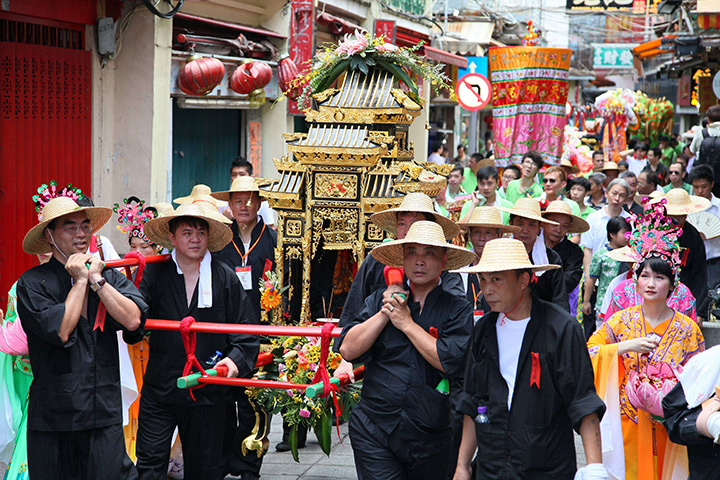A-Ma and Na Cha added to National Heritage List

A parade and activities celebrate the annual Feast of Na Cha (Photo provided by Cultural Affairs Bureau)
The Cultural Affairs Bureau announced in December that the city’s customs and beliefs about popular local divinities A-Ma (also known as Matsu) and Na Cha (Nezha) had recently been added to the National Intangible Heritage List.
With A-Ma and Na Cha there are now a total of eight local ‘treasures’ listed as national intangible heritage, the Bureau said, adding that it would continue to promote and protect the city’s ‘invaluable’ traditional culture.
The Bureau also said in the statement that the centuries-old customs and beliefs about A-Ma continue to resonate with local residents.
According to an introduction to the customs and beliefs about A-Ma by the Macau Museum, the indigenous population of Macau comprised mostly fisherfolk who worshipped A-Ma. The deity - originally from Putian City in Fujian Province - was named Lin Moniang. A-Ma would, according to legend, protect the local fishermen as they set out to brave the seas in search of fish, bestowing good luck upon believers. She thus became the goddess of seafarers and fishermen. During the Festival of A-Ma (also known as Tin Hau Festival), which takes place on the 23rd day of the 3rd month of the lunar calendar, both fisherfolk and those on land worship the goddess.
According to the Macau Museum, locals’ Na Cha customs and beliefs stretch back more than 300 years, honouring and worshipping Prince Na Cha. Originally, Na Cha was a boy character created in a novel about Chinese myths and legends in the 16th Century. Na Cha-related festivities include shrines and temples for worship. Other local folk activities include parades with children dressed as legendary and modern heroes, the making of Na Cha lucky charms and their use in divination, a firecracker-grabbing race, the distribution of ‘peaceful’ rice as a gift and Chinese Opera performances. Two local temples are dedicated to Na Cha.